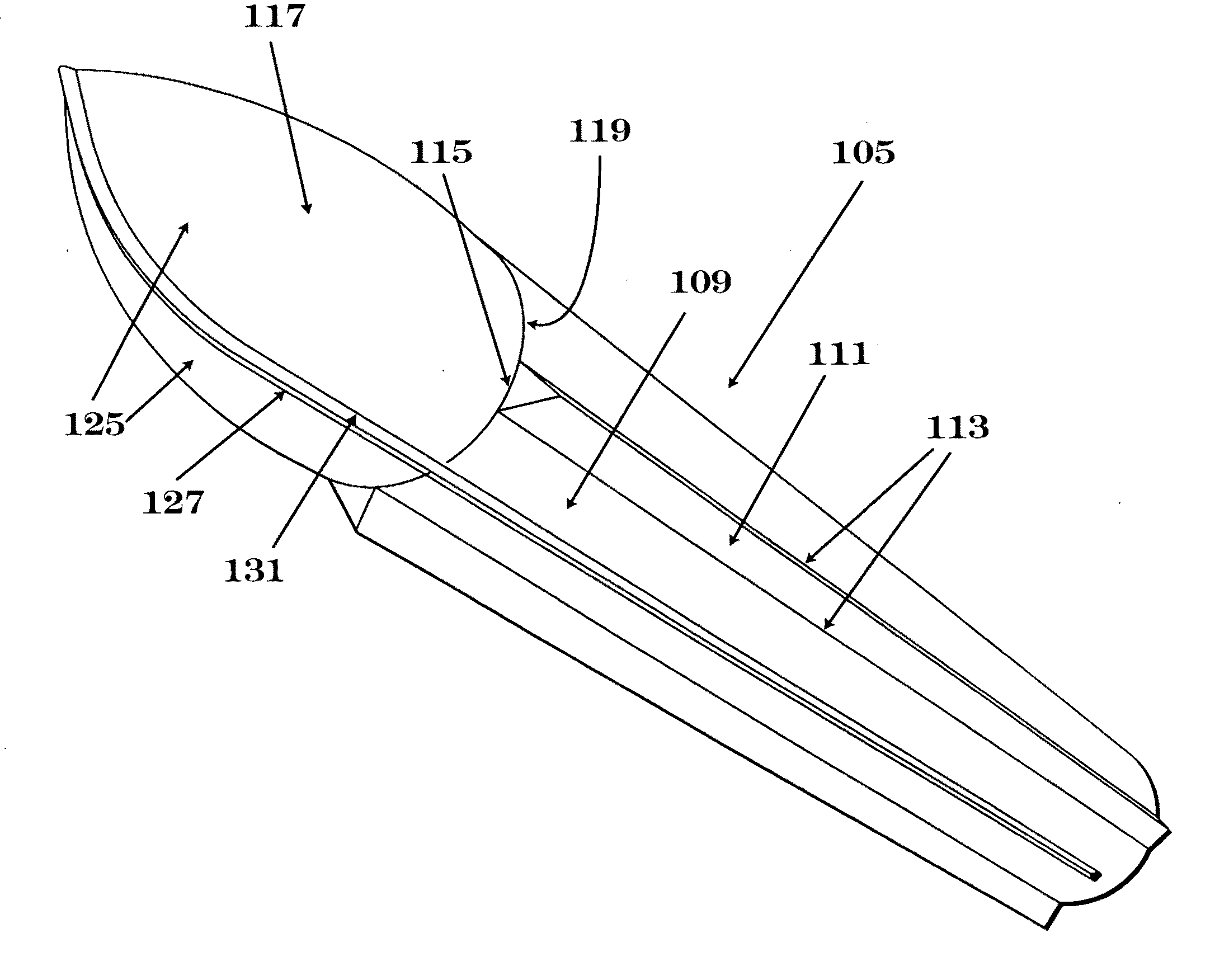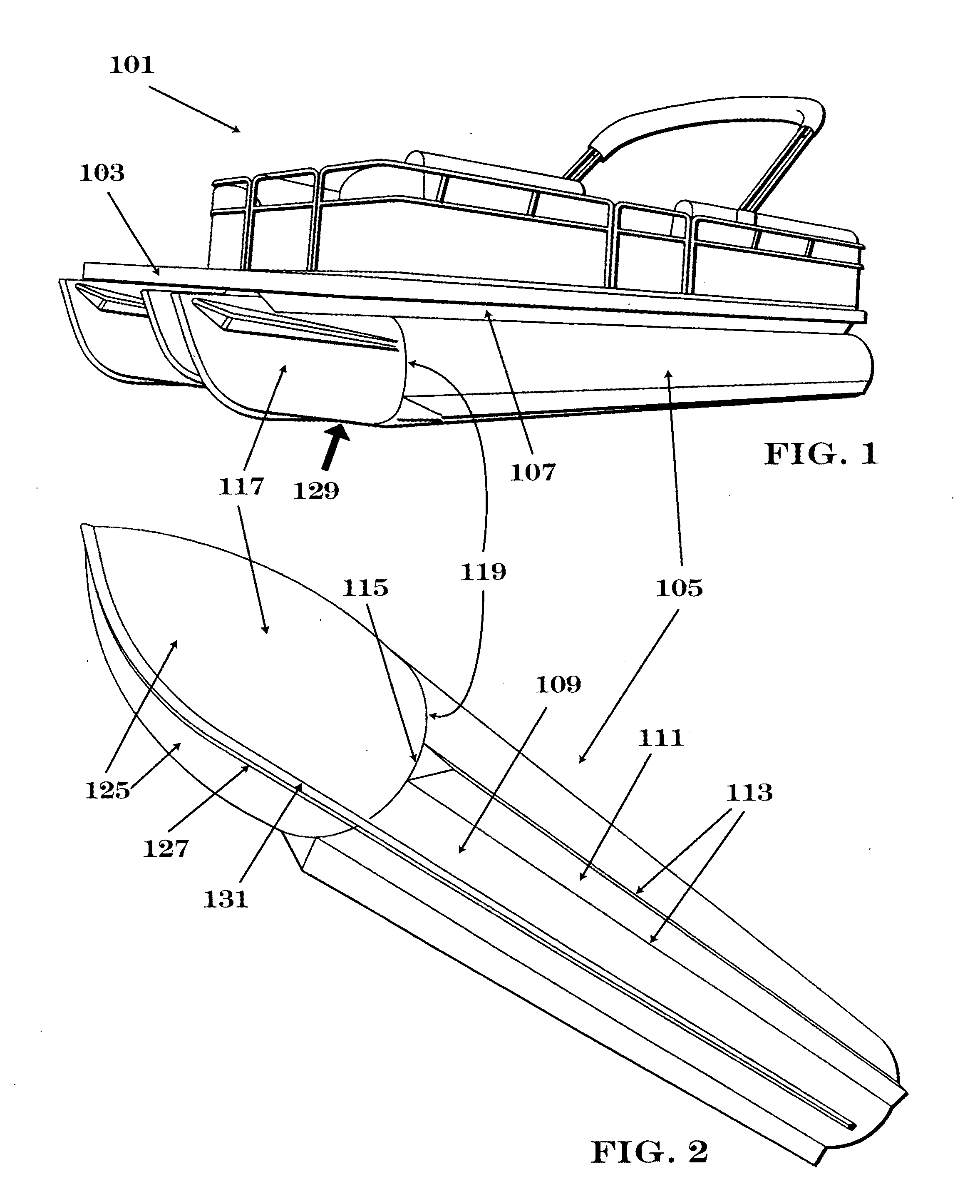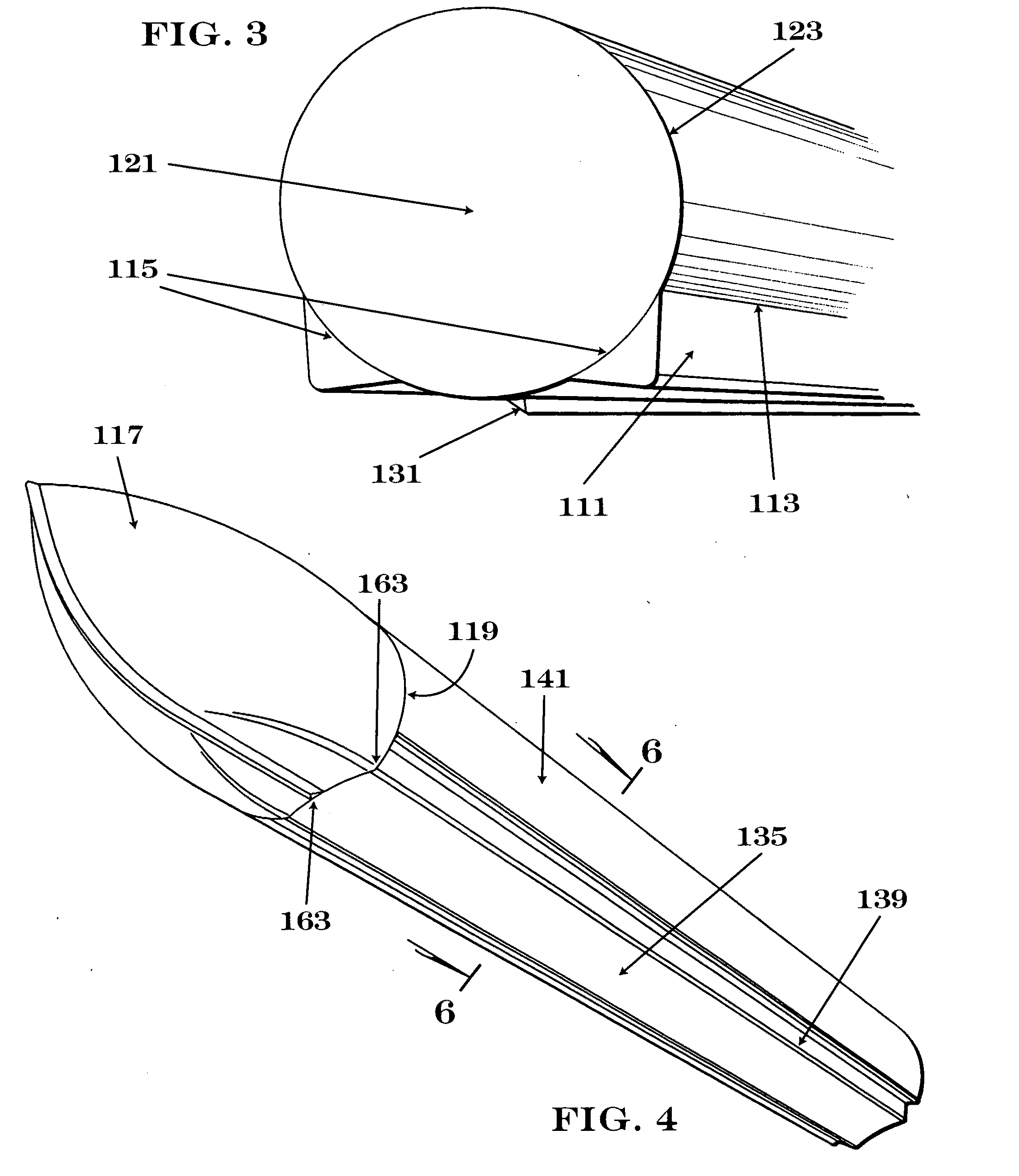Pontoon with integrated lifting strake and method for making the same
- Summary
- Abstract
- Description
- Claims
- Application Information
AI Technical Summary
Benefits of technology
Problems solved by technology
Method used
Image
Examples
Embodiment Construction
[0089]The invention as disclosed herein provides a pontoon with an improved running surface. The improved running surface comprises a concave main running surface having a centerline that is perpendicular to the surface of the water, further bounded by two sponsons, which in turn are bounded by two distal concave surfaces, or integrated lifting strakes. Thus, the invention provides at least three surfaces that direct water substantially downwardly perpendicular to the surface of the water, which provides maximum lift. The invention also includes several methods of manufacturing the pontoon, with the goal of such methods being to minimize the number of welds required in the manufacturing process, avoiding the number of welds exposed to water, and providing higher quality control by using automated manufacturing systems.
[0090]Referring now to the drawings, FIG. 1 depicts a pontoon boat 101 of the prior art. According to traditional designs and methods of manufacture, pontoon boats con...
PUM
 Login to View More
Login to View More Abstract
Description
Claims
Application Information
 Login to View More
Login to View More - R&D
- Intellectual Property
- Life Sciences
- Materials
- Tech Scout
- Unparalleled Data Quality
- Higher Quality Content
- 60% Fewer Hallucinations
Browse by: Latest US Patents, China's latest patents, Technical Efficacy Thesaurus, Application Domain, Technology Topic, Popular Technical Reports.
© 2025 PatSnap. All rights reserved.Legal|Privacy policy|Modern Slavery Act Transparency Statement|Sitemap|About US| Contact US: help@patsnap.com



